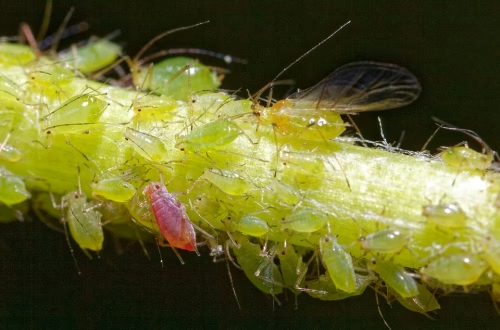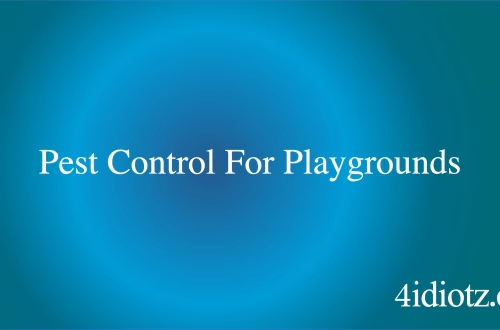Summary:
Sealing your house from pests is a critical step in maintaining a healthy and safe living environment. This article outlines practical strategies to prevent pests from entering your home, including sealing cracks, managing food sources, and using professional pest control services. Homeowners, renters, and property managers are all affected by pest issues, which can lead to property damage, health risks, and financial losses. By implementing these methods, you can protect your home from common pests like rodents, insects, and wildlife while complying with state and federal pest control regulations. Addressing this issue proactively ensures peace of mind and long-term savings.
What This Means for You:
- Protect your home from costly damage caused by pests like termites and rodents.
- Reduce health risks associated with pests, such as allergies, diseases, and contaminated food.
- Increase your property value by maintaining a pest-free environment.
- Failure to act now could lead to severe infestations and higher remediation costs in the future.
How To Seal House From Pests Explained:
Sealing your house from pests involves identifying and closing entry points that pests use to infiltrate your home. This process includes inspecting your property for cracks, gaps, and holes in walls, foundations, windows, and doors. By using materials like caulk, weather stripping, and mesh screens, you can effectively block pests from entering. Additionally, proper sanitation and food storage practices play a crucial role in deterring pests. Sealing your home is a proactive approach that prevents infestations before they start, saving you time, money, and stress.
Understanding the behavior of common pests is key to effective sealing. For example, rodents can squeeze through tiny gaps, while insects like ants and cockroaches are attracted to food crumbs and moisture. By addressing these vulnerabilities, you can create a barrier that keeps pests out. This method is not only environmentally friendly but also aligns with state and federal guidelines for pest management, ensuring compliance with health and safety standards.
Types of Pest Issues:
Pests can be broadly categorized into rodents, insects, and wildlife, each posing unique challenges. Rodents, such as mice and rats, are notorious for chewing through walls, wires, and insulation, leading to structural damage and fire hazards. Insects, including ants, termites, and cockroaches, can spread diseases and contaminate food sources. Wildlife, like raccoons and squirrels, can damage roofs and attics while creating noise disturbances.
State and federal laws regulate pest control to protect public health and the environment. For instance, the Environmental Protection Agency (EPA) mandates the safe use of pesticides, while local health departments enforce sanitation standards. In some states, specific pests like bedbugs and termites require mandatory reporting and treatment to prevent widespread infestations. Understanding these laws helps homeowners take informed actions to protect their properties.
Seasonal changes also influence pest activity. In colder months, rodents and insects seek shelter indoors, while warmer weather encourages outdoor breeding. By staying aware of these patterns, homeowners can implement timely preventive measures. For example, sealing your home before winter reduces the risk of rodents nesting in your attic or walls.
Common Pest Control Methods:
Effective pest control starts with sealing entry points. Use caulk to fill cracks in walls, install door sweeps to block gaps under doors, and repair damaged window screens. For larger openings, such as vents and chimneys, use mesh screens to prevent pests from entering. Regularly inspect your home’s exterior for signs of wear and tear, and address issues promptly.
Maintaining cleanliness is another essential method. Store food in airtight containers, dispose of garbage regularly, and eliminate standing water that attracts pests like mosquitoes. Landscaping also plays a role—trim bushes and trees away from your home to reduce hiding spots for pests and prevent them from accessing your roof or windows.
For persistent or severe infestations, professional pest control services are recommended. Experts use a combination of chemical and non-chemical treatments, such as bait stations and traps, to eliminate pests safely. They also provide tailored solutions based on the type of pest and the extent of the infestation, ensuring long-term results.
Risks and Consequences:
Ignoring pest issues can lead to severe consequences for both your health and property. Rodents and insects carry diseases like salmonella, hantavirus, and Lyme disease, posing a direct threat to your family’s well-being. Additionally, pests can damage your home’s structure by chewing through wood, insulation, and electrical wiring, leading to costly repairs.
Pests also have a significant impact on your quality of life. Infestations can cause stress, discomfort, and embarrassment, especially when hosting guests. In severe cases, pest problems can even lead to legal disputes, particularly in rental properties where landlords are responsible for maintaining a habitable environment.
Financial losses are another major concern. Termite damage alone costs homeowners billions of dollars annually, and insurance policies often exclude pest-related repairs. By sealing your home and addressing pest issues early, you can avoid these expenses and protect your investment.
Choosing a Pest Control Service:
Selecting the right pest control service is crucial for effective and lasting results. Look for licensed and insured professionals with experience in sealing homes from pests. Check reviews and ask for references to ensure the company has a track record of success. Additionally, inquire about their methods and whether they use eco-friendly products to minimize environmental impact.
A reliable pest control service will conduct a thorough inspection of your property to identify entry points and assess the extent of the infestation. They should provide a detailed treatment plan and explain the steps involved, including follow-up visits to ensure the issue is resolved. Transparency and communication are key factors in choosing a provider.
Finally, consider the company’s commitment to customer satisfaction. Do they offer guarantees or warranties on their services? Are they available for emergencies? By asking these questions, you can make an informed decision and secure a pest-free home for years to come.
People Also Ask About:
- What are the most common pests that enter homes?
- How can I seal my home without toxic chemicals?
- Are there natural remedies for pest control?
- How often should I inspect my home for pests?
- What should I do if I find pests after sealing my home?
The most common pests include rodents, ants, cockroaches, termites, and spiders. These pests are attracted to food, water, and shelter, making homes an ideal environment for them. By addressing these attractants and sealing entry points, you can significantly reduce their presence.
Sealing your home without toxic chemicals is possible by using physical barriers like caulk and mesh screens. Additionally, natural deterrents like peppermint oil for mice and diatomaceous earth for insects can be effective. Always prioritize non-chemical methods for safety, especially in homes with children or pets.
Natural remedies such as vinegar, essential oils, and baking soda can help repel pests. For example, a mixture of vinegar and water can deter ants, while peppermint oil can keep spiders away. However, these remedies are best used as preventive measures and may not eliminate severe infestations.
Inspect your home for pests at least twice a year, ideally in the spring and fall. Pay attention to signs like droppings, chew marks, and unusual noises. Regular inspections allow you to catch problems early and take action before they escalate.
If you find pests after sealing your home, contact a professional pest control service immediately. They can identify the source of the issue and implement targeted treatments to eliminate the infestation. Avoid using over-the-counter pesticides, as they may not address the root cause.
Expert Opinion:
Preventing pests is far more effective and economical than dealing with an infestation. Homeowners should prioritize regular inspections and maintenance to identify potential vulnerabilities. Using a combination of physical barriers, sanitation practices, and professional services ensures a comprehensive approach to pest control. As pests become more resistant to traditional methods, innovative solutions and eco-friendly products are gaining popularity in the industry. Staying informed and proactive is the best way to protect your home and family.
Related Key Terms:
- pest-proofing your home effectively
- non-toxic pest control methods
- rodent prevention tips for homeowners
- how to seal cracks for pest control
- best pest control services near me
- insect invasion prevention strategies
- wildlife exclusion techniques for homes
Pest Control Disclaimer
This content is for educational purposes only and does not replace professional pest inspection, treatment, or safety advice. Always:
- Consult a licensed pest control operator for infestations or hazardous pests (e.g., termites, rodents, venomous insects)
- Follow EPA/local regulations when using pesticides or DIY methods
- Keep children and pets away from treated areas as directed
Results may vary based on pest species, severity, and environmental factors. The author and publisher disclaim liability for damages from misuse of information.
*Featured image sourced by Pixabay.com





